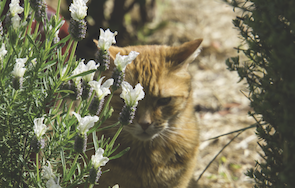At Diageo, Tanqueray revived its Old Tom last year for a 100,000 bottle release, also with bartenders in mind. At the time, global brand ambassador Barrie Wilson said: “This exceptional liquid will allow bartenders to recreate authentic Old Tom cocktails with a true sense of how they would have tasted historically. As part of this launch, we’ve identified 10 historical Tanqueray Old Tom cocktails and included their initials along with the bottle number on the front label. “Our hope is to inspire bartenders to bring these definitive cocktails back for a new generation.”
Like many Old Toms, the company described Tanqueray Old Tom as bridging the gap between genever and London Dry gin and the recipe came from Charles Tanqueray’s 1835 foray into the world of Old Tom. Gordon’s also had a 66-year relationship with Old Tom – its Gordon’s Special Old Tom launched in 1921 and it was discontinued in 1987. Harry Johnson, who was a bartender from about 1860 in the US, listed Old Tom in his famous Bartenders’ Manual as an “essential liquor required in the bar room”. And it’s over to the US for another twist in the tale.
To wood or not to wood
Jensen’s claims its Old Tom is faithful to the styles that would’ve been shipped to the US – a clean distillate, heavy on botanicals and “therefore most accurate for cocktail making”. However, in the US, Old Toms such as Ransom are aged in barrel to mark this passage from the UK to the US, making them brown in colour.
This journey across the Atlantic is cause for further confusion, says Hayman. “In the 1850s, gin was sold from barrels and it would’ve taken a few months to make the crossing. “But the barrels would’ve been used many times and I think they would’ve had minimal impact.”
Hayman also believes this move has been driven by the boom in brown spirits in the US, leading distillers to look at the relationship between gin and wood. There is currently no legal definition of Old Tom and as more craft distillers spring up, the chance to research and experiment gives way to more interpretation, which can only be exciting for the category.
The next big thing?
So for all this, is Old Tom likely to be ‘the next big thing’ in gin terms? In short, the answer seems to be no. Charlie Downing, head of Diageo’s gin portfolio, says there are no current plans to produce any more Tanqueray Old Tom following the 100,000 bottle release in 2014. In his own words: “There is appeal of Tanqueray Old Tom in its rarity, and so there are no further plans to distil further runs.”
Downing believes classic London Dry styles of gin will win out: “Gin is exploding in popularity, partly driven by craft distillers entering the category, tinkering with different botanicals. I see this trend continuing and I celebrate the fact that the category is vibrant. However, I do see people coming back to the classic gin styles – juniper-forward London Dry for example.”
For Hayman, there is no doubt that Old Tom has a place in the gin family, but he says: “I don’t expect it to be the next big thing. The go-to gin for many is the drier style and the majority of gin sold in retail is used to make a G&T – that is not going to change.” Though he says Old Tom makes a G&T more approachable for some.
In Norway, Arcus has been producing Golden Cock Old Tom since 1936 but it remains in its home market and Eli Wahlstrøm, white spirits manager, says not even the classic cocktail revolution has brought about greater demand for Golden Cock. “The reason is probably higher competition and an increased number of international gin brands,” says Wahlstrøm. Though it is set to get a new design, so who knows where it might end up.
So Old Tom might be sweet, it might not. It might be aged in barrels, it might not. Without a time machine, we’ll never know the whole story. One thing is for certain, though – the cat is out of the bag.




